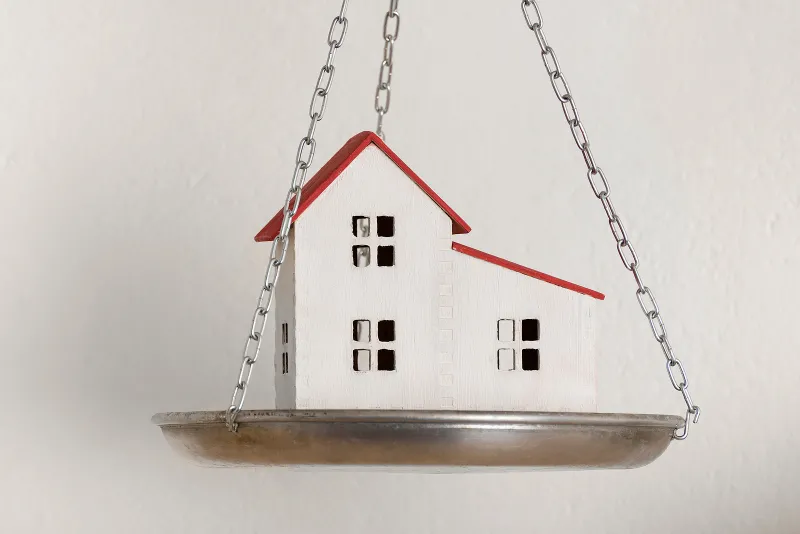This Ontario woman needs to shed her unproductive Montreal rental and invest for retirement
Judy’s portfolio is heavy on real estate and light on financial assets

Judy’s portfolio is heavy on real estate, $850,000 for her house and $700,000 for her Montreal rental property with a $536,000 mortgage on the rental.
Author of the article: Andrew Allentuck
In small town in Ontario, a woman we’ll call Judy, 43, lives with her daughter, Suzy, age seven. A widow, Judy has a monthly income of $11,651 composed of a civil service salary, $1,320 from her late husband’s pension and Canada Pension Plan survivor benefit, $247 from the Canada Child Benefit and $1,500 in rental income. After tax, it works out to $7,485 per month and covers $6,918 in expenses, including the $2,190 monthly mortgage cost on her rental unit.
Judy’s issue is to determine if she can retire at age 57 with a civil service pension and have $75,000 per year after tax in 2021 dollars. She wants to build Suzy’s $21,274 RESP to a level at which it can provide income for her first and perhaps second degrees. She is also interested in building a $90,000 addition to her house.
Family Finance asked Derek Moran, head of Smarter Financial Planning Ltd. in Kelowna, B.C., to work with Judy.
Investment allocations
Moran notes that Judy’s portfolio is heavy on real estate, $850,000 for her house and $700,000 for her Montreal rental property with a $536,000 mortgage on the rental. She is light on financial assets, with just $204,961 in her RRSP and TFSA and cash accounts combined. Real estate thus makes up about 88 per cent of her total assets, a figure that’s too high for comfort, Moran says.The rental property is the issue. Subtracting the $536,000 mortgage leaves Judy with $164,000 in equity. The unit’s rent, $18,000 per year less mortgage interest, taxes, condo fees, insurance and maintenance leaves $396 per year. That’s a .0024 per cent annual return to capital, virtually nothing in financial terms, especially considering the leverage.
Email andrew.allentuck@gmail.com for a free Family Finance analysis.
There is another consideration. Judy’s $17,222 total annual mortgage payment with principal included less $396 nominal annual return means she has a carrying cost of $16,826 per year. That is far too much. It’s a low-yield investment even as a hold for a decade until Suzy goes to university which could be in Montreal, where the condo is located. Or someplace else. Sell it, Moran advises. If the property is sold for its $700,000 price less five per cent for primping and commissions, net $665,000, less its $536,000 mortgage, net $129,000, and if this sum is invested by Judy, who is an experienced investor in stocks, to generate four per cent per year after inflation for 14 years to her age 57, it will become $223,405.
That sum, more conservatively invested to generate a bit less, 3.5 per cent per year, for 33 years would pay Judy about $11,350 per year. We’ll assume she takes this option.
Suzy’s RESP has a present balance of $21,274. Judy puts in $400 per month, which exceeds the $208 maximum to attract the lesser of $500 per year or 20 per cent of contributions for the Canada Education Savings Grant. In ten years, with the cutback as recommended, when Judy is ready for post-secondary studies, her RESP, with a three per cent annual return after inflation, will have a balance of $64,000, enough for four years of studies if Suzy lives at home.
Growing retirement income
Extra cash, including $192 per month she can take from RESP contributions over $208 per month, should go to Judy’s $43,113 TFSA. She has at least $43,000 of room allowing for some gains on investments. If Judy adds $6,000 per year and generates a three per cent return after inflation, the TFSA will have a value of $170,800 at her age 57. If that sum is spent over the following 33 years to her age 90, the capital, still generating a three per cent per year return after inflation, would produce $7,980 per year.Judy can retire with a civil service pension. If she works to age 57, the pension would pay her $54,684 per year in 2021 dollars. At age 65, it loses its $6,000 bridge and declines to $48,684 per year. She also has a survivor benefit pension from her late husband’s work for $9,181 per year. It contains an estimated $3,181 child entitlement that ends when Suzy reaches 18 so that she will have $6,000 indexed for life.
If Judy works to 57, she should receive 90 per cent or $13,000 of the maximum Canada Pension Plan benefit starting at 65, $14,445 per year, plus a residual survivor benefit. Her Old Age Security at age 65 would be the present maximum of $7,380 per year.
RRSP contribution limits
Judy’s RRSP has a present balance of $137,394. Due to the pension adjustment, which limits RRSP contributions to 18 per cent of gross income, which she already contributes at work, she cannot contribute more. Moreover, any tax savings will be lost to high or higher tax rates when she receives her work pensions, CPP and OAS. If the present RRSP balance grows at three per cent per year after inflation for 14 years to age 57, it will become $207,838 and still generating three per cent per year, pay a taxable income of $9,717 for the following 33 years to her age 90.At age 57, Judy would have a civil service income of $54,684, her CPP survivor pension of $6,000 per year, RRSP income of $9,717, $11,350 from the condo sale, and TFSA cash flow of $7,980. Taxable income would be $81,751. After 20 per cent average tax, she would have $65,400 plus TFSA cash flow of $7,980 for total post-tax income of $73,380 per year or $6,115 per month. That’s a little below her $75,000 target, but $808 per month of child care, riding lessons and revised RESP contributions would be over, balancing her budget with revised monthly expenses of $6,110.
At 65, Judy will lose her $6,000 pension bridge and so have a net $48,684 before tax, $11,350 from the condo sale, $14,445 CPP including a reduced survivor benefit, RRSP income of $9,717, and $7,380 OAS for a taxable total of $91,576. After 22 per cent average tax, she would have $71,429 plus TFSA cash flow of $7,980 for total income of $79,409 per year or $6,620 per month. That’s over her $75,000 annual target.
If she wants to pursue the home renovation, she could contribute $20,000 in cash and take out a mortgage of $70,000 at three per cent. That would cost Judy $4,660 per year for 20 years or $3,540 per year for 30 years. With no RESP savings or child-care costs, it would be feasible on her retirement budget, but it would cut savings before Suzy leaves home.
Retirement stars: 3 *** out of 5
Financial Post
(C) 2021 The Financial Post, Used by Permission

































